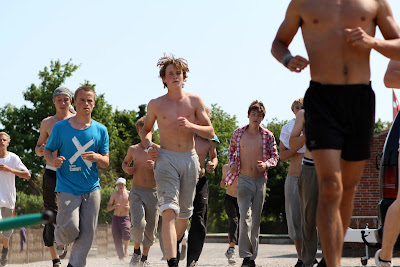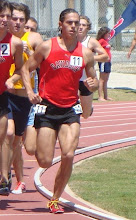Before I describe the events of my time in Gerlev, I should
give some background about the school. The
idea of the Folkehøjskole (translated from Danish as
“folk high school”) is one that dates back to the 1800’s and is Danish by
origin, although it has spread throughout most of the other Nordic countries as
well as Germany and Austria. It came initially
from the ideas of Nikolaj Grundtvig, a famous Danish philosopher and writer,
who took inspiration from both the English boarding school system and the
changes made to the French educational system after the French Revolution. However, instead of focusing on the
traditional “formal education” that we associate with schooling today, Grundtvig
focused on a more general education and enlightenment (somewhat akin to the “liberal
arts” education in American colleges/universities- not learning specific facts
and figures, but learning “how to think” instead). The folk high schools are designed to teach young
adults about enlightenment, morality, ethics, and democracy, but not in the way
that universities or schools typically approach this instruction. Instead, they teach these ideas through different
mediums such as sport, music, writing, or art.
Because there is no degree awarded at the end of the semester, the
schools have much more flexibility in their curriculums and the interactions
between students and staff are more open. While I will openly admit that I have
a bias for “gap-years” (I’ve done two of them now) the Danish tradition of
using the folk high school as a gap year to allow high school graduates or
university graduates to think about what they want to do with their lives seems
to be very mature, and has also shown distinctive positive results, with
students that had taken the year off having a much lower university dropout
rate than students who didn’t.
Today, Denmark boasts more than 70 of these folk high
schools/academies (in a country of 5 million inhabitants). The Gerlev Idrætshøjskole (Roughy
translated as the “Gerlev Physical Education and Sports Academy”) itself was founded in 1938 and is currently the only sports academy on the eastern
island of Zealand. The 125 students live
in dormitories on campus from 2 to 10 months, and unlike many of the other
institutions, staff members also live in houses on or near campus, which
creates a very family-like atmosphere.
This is augmented by the fact that much of the daily maintenance and
upkeep work around campus is performed by the students, who each serve a
certain amount of time on the cooking staff and cleaning crews throughout the
semester. While it may seem like a small
detail, the result is that there seems to be a much greater air of
responsibility (although this may because my comparison was often with my own
university experience, where we had free campus laundry, and a large cleaning
staff to clean up after the more spoiled and slovenly members of the student
body.) During the summer the campus is
occupied by a constant stream of summer conferences and events that pay for a
large part of the school’s operating costs throughout the year, allowing the
school to keep student’s tuitions low (made even lower by subsidies from the
Danish government.) After Denmark’s
involvement in the war in Afghanistan, the school has also initiated a pilot
project to re-integrate veterans returning from tours in Afghanistan into
society by spending time at Gerlev..
During my stay at Gerlev I had the
opportunity to interview the headmaster, Finn Berggren, who I discovered was
the primary reason for Streetmovement’s presence at Gerlev. Finn has a long history with the school, as he
has been both a student and a professor there, in addition to the headmaster
for the past 10 years. His interest in Streetmovement
began 6 years ago when he saw the guys competing on a TV show game show and was
immediately captivated by the young men’s’ movement. Finn has a strong gymnastic background, a
sport that is already very popular in Denmark, and has coached around the world
for the Danish National gymnastics team and with a number of other high-level
teams. After talking with a fellow
administrator at Gerlev, he invited the SM guys to come teach a “sports class”
at Gerlev. After the success of the
first semester, the classes began to grow, becoming one of the more popular
classes, and eventually replacing the “gymnastics” discipline, a move that was
designed to keep up with the changing times and popular interests, while
keeping many of the traditional values of rigorous gymnastic training (as
anyone that has trained with the SM guys can attest to). Today, the Streetmovement course is one of
the most popular one at Gerlev and attracts nearly 1/3 of the students (both
men and women).
After a few years of training on
buildings around the Gerlev campus, the Streetmovement guys asked Finn to build
them a specialized training facility, essentially a parkour playground, something
which had never been attempted at that point.
The result, after a lot of planning by Streetmovement and funding from
the school, was the Gerlev Parkour Park.
 |
| Photo courtesy of the Streetmovement site. |
 |
| Photo courtesy of the Streetmovement site. |
The structure itself is under
constant critique and renovation, and each summer the guys make an effort to
add something to the structure or the surrounding area, a tradition that has
ensured that the traceurs always have new challenges.
My time in Gerlev seemed to pass
in a blur of amazing food, lots of new friends, and a glimpse into a way of
life that is often very different from the one that I grew up with in the US. While of course the main focus of my time at
Gerlev was training with and learning from the Streetmovement instructors, the
fact that I was living in the dorms with the other students meant that I got
good look at life there.
The school’s primary focus is to give students the
opportunity to learn and develop important leadership and social skills that
are not always gained from the “typical adacemic experience”. The result is that there is as much of an emphasis
placed on the various aspects of social life at the school as on the actual
curriculum. Thus things like living
arrangements, taking responsibility as a group for the cleaning and upkeep of
the school, and helping prepare food for everyone are important parts of the
student’s lives. Each student is placed
in a “specialty track” which they follow for the course of the semester, with
10 hours of instruction per week in either in parkour, dance, football, or adventure
kayaking, beach volleyball, diving, circus arts, surfing, skiing, running, and
crossfit/fitness (some subjects are only available for a specific semester). The semester, which is 17 weeks in the spring
or fall and 6 weeks in the winter, also includes 6 lessons/week in an
under-study, which can be in house dance, swimming, gymnastics, street dance,
windsurfing, skating, martial arts, sports pedagogy, crossfit/fitness,
kayaking, dirt biking, beach volleyball, or parkour. And as if that wasn’t enough, students also
take 4 lessons/week in either philosophy, sports psychology, personal
development, music, event management, theater, band, body massage, drawing or
painting, or current debate.
 |
| The main grounds (Photo courtesy of Sk8Skool site.) |
Of course no description of life at Gerlev would be complete
without mentioning the amazing fare that is served at the school. My first introduction to the school
apparently passed like that of many others, as I was blown away by the
freshness and quantity of the food, and immediately stuffed myself with three
helpings of everything, realizing too late that I was about to train with the
Streetmovement guys right afterwards.
What makes the food so special?
Personally, I’m convinced that it is the combination of atmosphere,
presentation, source, and quantity that goes into it. The dining area is bright and open and the
four big tables at the center of the room from which the food is served, buffet
style, lend a very communal feeling to the meals. The food itself is mostly sourced from local
farms and include large quantities of seasonal items, in a presentation form
that is professional but not over-the-top.
And then of course, the quantity of food needed for 125 hungry and
active students, plus staff, gives the image of bounty that is appealing in and
of itself. The kitchen has the serving
down to a science, as it serves over 174,000 meals/year, and attracts a large
number of conferences and summer events based on the fare alone.
 |
| I know it's a stock photo but it shows the atmosphere of the kitchen. (Photo courtesy of the Gerlev site) |
After finishing a semester at
Gerlev (or two), students often go on to further studies, or start working in
the “real world”. Each year a small
number of the most advanced and proficient members of the parkour and street
dance tracks are offered the opportunity to become members of the Gerlev
performance team, a group of highly-skilled performers that showcases the
school’s talent and regularly performs shows and spectacles for a variety of
the events. Although I didn’t get a
chance to see a performance in person, I did train a lot with the guys and saw
some of the videos of performances that they did recently during a “tour” in China
and at this past summer’s European Gathering.
The Gerlev Performance Team show at the 2010 European Gathering
The Gerlev Performance Team on tour in China






































.jpg)


